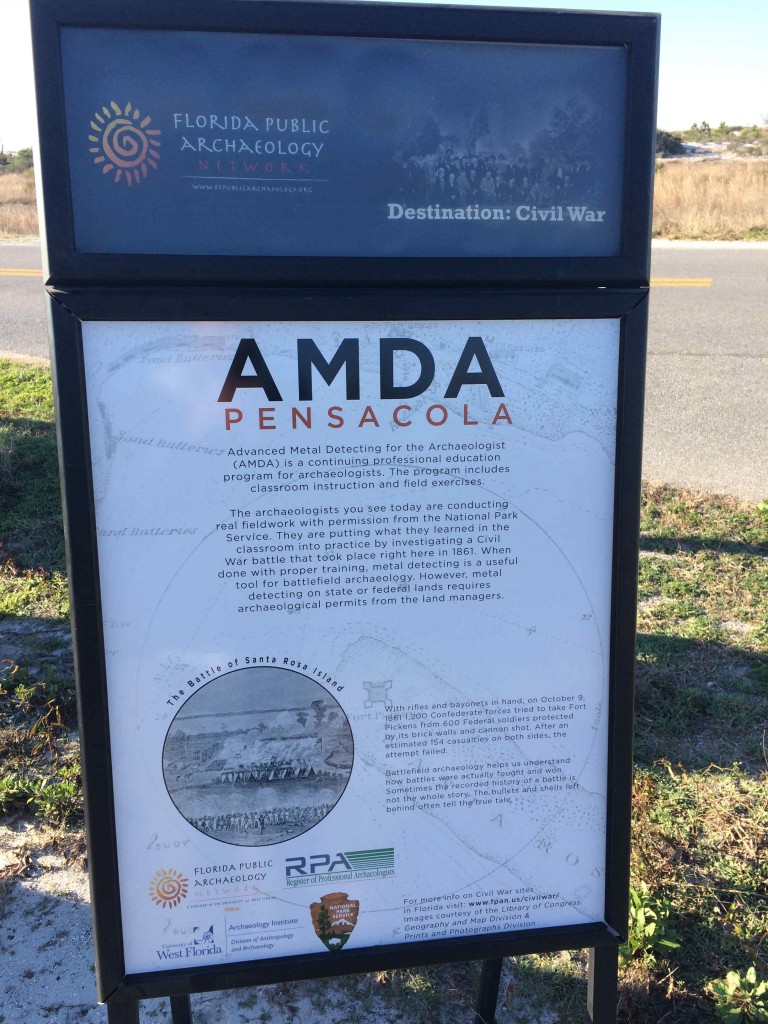On February 5-7, 2016 AMDA conducted its eighth class aimed at training professional archaeologists in the best practices of systematic metal detection. The training took place in Pensacola, Florida where our hosts, the Florida Public Archaeology Network (FPAN), had partnered with the Gulf Islands National Seashore (Fort Pickens unit). Classroom space was provided by the NPS, and the two-day field exercise was conducted in an area believed to be the location of the 6th New York Volunteers’ (Wilson’s Zouaves) camp at the time of the October 9, 1861 Battle of Santa Rosa Island. While the majority of the 22 trainees were affiliated with FPAN, others in attendance came from state agencies, CRM firms, and the Battle Road Archaeological Project (MA). All trainees attended for the entire three-day or 24-credit hour option.
As in previous classes, representatives from Minelab, First Texas Labs(Fisher/Teknetics), and North Georgia Detectors were in attendance. These industry representatives provided a valuable technical knowledge of the machines and their applications. As a result, we modified the classroom sessions to allow attendees more time to handle the machines and ask questions of the representatives at the end of the day. This provided a practical outlet for the attendees to initially test the detectors while the classroom sessions were fresh in their minds as well as save time in getting acquainted with machines the following field exercise day. Another modification to the classroom training was the addition of a mid-day lecture from the David Ogden, Cultural Resource Manager of Fort Pickens. Mr. Ogden’s lecture and tour of the grounds provided an excellent context for the subsequent field days, and by having the lecture during the day, all AMDA participants were able to attend. Additionally, the number of casestudies provided to attendees has swollen to nearly 100 reports and papers, which includes a greater regional and temporal diversity than previously represented.
The class was successful in not only demonstrating the efficacy of systematic metal detection, but specifically in aiding the NPS and FPAN in the re-discovery of the Wilson’s Zouaves’ camp. The success in locating the camp also underscored the need to adapt our recovery, data management, and sampling strategies to particular field conditions due to the sheer density of artifacts identified. The need for this adjustment provided an extremely effective example of a pedagogical touchstone from the previous day in the classroom.
Following the seventh class offering, two new AMDA instructors were added to the roster: Charles Haecker and Lauren Walls. Instructors in attendance at Pensacola were Daniel Elliott, Charles Haecker Douglas Scott, Garrett Silliman, Sheldon Skaggs, and Lauren Walls.



